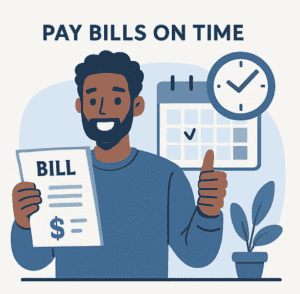-
Table of Contents
- Introduction
- Importance of Tracking and Monitoring Your Spending
- The Difference Between Budgeting and Saving
- Tips for Cutting Expenses and Saving Money
- Step-by-Step Guide to Creating a Budget
- How to Cut Unnecessary Expenses
- Best Tools & Apps for Budgeting in India
- How to Stick to Your Budget (and Not Give Up!)
- Budgeting for the Future
- Conclusion
Introduction

Budgeting is a crucial aspect of personal finance that can help individuals take control of their money and achieve their financial goals. By creating a budget, you can track your income and expenses, identify areas where you can save money, and make informed decisions about your spending. In this guide, we will cover the basics of budgeting and provide practical tips on how to get started on your journey to financial stability. Whether you are looking to pay off debt, save for a big purchase, or simply improve your financial health, mastering the art of budgeting is the first step towards achieving your financial goals.
Importance of Tracking and Monitoring Your Spending
Budgeting is a crucial aspect of financial management that often gets overlooked by many individuals. It involves tracking and monitoring your spending to ensure that you are living within your means and saving for the future. By keeping a close eye on your expenses, you can identify areas where you may be overspending and make necessary adjustments to stay on track with your financial goals.
One of the first steps in taking control of your finances is to track your spending. This involves keeping a detailed record of all your expenses, including bills, groceries, entertainment, and any other purchases you make. By tracking your spending, you can see exactly where your money is going each month and identify any patterns or trends that may be impacting your financial health.
There are many tools available to help you track your spending, from simple spreadsheets to budgeting apps that sync with your bank accounts. Choose a method that works best for you and make it a habit to update your spending records regularly. This will give you a clear picture of your financial situation and help you make informed decisions about where to cut back or save more.
Monitoring your spending is just as important as tracking it. Once you have a record of your expenses, take the time to review it and analyze where you may be overspending. Look for areas where you can make cuts or find more cost-effective alternatives. For example, if you notice that you are spending a significant amount on dining out each month, consider cooking at home more often or finding ways to reduce your restaurant expenses.
It’s also important to monitor your spending in real-time to avoid going over budget. Set up alerts on your bank account or credit card to notify you when you are approaching your spending limit in a particular category. This will help you stay on track and avoid unnecessary expenses that can derail your financial goals.
By tracking and monitoring your spending, you can take control of your finances and make informed decisions about where to allocate your money. This will not only help you stay within your budget but also allow you to save for the future and achieve your financial goals.
In conclusion, tracking and monitoring your spending is a crucial step in taking control of your finances. By keeping a close eye on your expenses and making adjustments as needed, you can ensure that you are living within your means and saving for the future. Take the time to track your spending, analyze your expenses, and make informed decisions about where to cut back or save more. By doing so, you can achieve financial stability and peace of mind.
The Difference Between Budgeting and Saving
 Budgeting and saving are two essential components of financial management, but they are often confused or used interchangeably. While both are important for achieving financial stability and security, they serve different purposes and require different strategies. In this article, we will explore the difference between budgeting and saving, and how you can effectively incorporate both into your financial plan.
Budgeting and saving are two essential components of financial management, but they are often confused or used interchangeably. While both are important for achieving financial stability and security, they serve different purposes and require different strategies. In this article, we will explore the difference between budgeting and saving, and how you can effectively incorporate both into your financial plan.
Budgeting is the process of creating a plan for how you will spend your money. It involves tracking your income and expenses, setting financial goals, and allocating funds to different categories such as housing, transportation, groceries, and entertainment. Budgeting helps you prioritize your spending, identify areas where you can cut back, and ensure that you are living within your means.
On the other hand, saving is the act of setting aside money for future use or emergencies. Saving allows you to build a financial cushion, achieve long-term goals such as buying a home or retiring comfortably, and protect yourself from unexpected expenses. While budgeting focuses on managing your day-to-day expenses, saving is about planning for the future and building wealth over time.
One key difference between budgeting and saving is their time horizon. Budgeting is a short-term activity that helps you manage your current income and expenses, while saving is a long-term strategy that involves setting aside money for future needs. Budgeting helps you live within your means and avoid debt, while saving helps you build wealth and achieve financial goals.
Another difference between budgeting and saving is their focus. Budgeting is about managing your cash flow and making sure that you have enough money to cover your expenses each month. Saving, on the other hand, is about setting aside money for specific goals or emergencies, such as a down payment on a house or a medical emergency.
To effectively manage your finances, it is important to incorporate both budgeting and saving into your financial plan. By creating a budget, you can track your income and expenses, identify areas where you can cut back, and prioritize your spending. This will help you live within your means, avoid debt, and achieve your financial goals.
Once you have created a budget, you can then focus on saving money for future needs. This may involve setting up automatic transfers to a savings account, contributing to a retirement account, or investing in stocks or bonds. By saving money regularly, you can build a financial cushion, achieve long-term goals, and protect yourself from unexpected expenses.
In conclusion, budgeting and saving are both essential components of financial management, but they serve different purposes and require different strategies. Budgeting helps you manage your day-to-day expenses and live within your means, while saving helps you build wealth and achieve long-term goals. By incorporating both budgeting and saving into your financial plan, you can take control of your finances and achieve financial stability and security.
Tips for Cutting Expenses and Saving Money
 Budgeting is an essential skill that everyone should master in order to take control of their finances and achieve their financial goals. One of the key components of budgeting is cutting expenses and saving money. By making small changes to your spending habits, you can free up more money to put towards your savings or paying off debt. In this article, we will discuss some tips for cutting expenses and saving money to help you take control of your finances today.
Budgeting is an essential skill that everyone should master in order to take control of their finances and achieve their financial goals. One of the key components of budgeting is cutting expenses and saving money. By making small changes to your spending habits, you can free up more money to put towards your savings or paying off debt. In this article, we will discuss some tips for cutting expenses and saving money to help you take control of your finances today.
One of the first steps in cutting expenses is to track your spending. By keeping a record of where your money is going, you can identify areas where you may be overspending and make adjustments accordingly. This can be done using a budgeting app or simply by keeping a written record of your expenses. Once you have a clear picture of your spending habits, you can start to look for ways to cut costs.
One of the easiest ways to cut expenses is to reduce your discretionary spending. This includes things like eating out, shopping for non-essential items, and going to expensive entertainment venues. By cutting back on these types of expenses, you can free up more money to put towards your savings or paying off debt. Consider setting a budget for these types of expenses and sticking to it to help you stay on track.
Another way to cut expenses is to look for ways to save on your regular bills. This can include things like negotiating with your service providers for lower rates, switching to a cheaper cell phone plan, or cutting back on your energy usage to lower your utility bills. By taking the time to review your regular expenses and look for ways to save, you can free up more money in your budget.
One often overlooked way to cut expenses is to review your insurance policies. By shopping around for better rates on your car, home, or health insurance, you may be able to save hundreds of dollars each year. Consider reaching out to different insurance providers to get quotes and see if you can find a better deal. Additionally, consider raising your deductibles or bundling your policies to save even more money.
One of the most effective ways to save money is to automate your savings. By setting up automatic transfers from your checking account to your savings account each month, you can ensure that you are consistently putting money away for your future. Consider setting a specific savings goal, such as building an emergency fund or saving for a big purchase, to help you stay motivated to save.
In conclusion, cutting expenses and saving money is an essential part of taking control of your finances. By tracking your spending, reducing discretionary expenses, looking for ways to save on regular bills, reviewing your insurance policies, and automating your savings, you can free up more money to put towards your financial goals. By making small changes to your spending habits, you can take control of your finances and achieve your financial goals.
Step-by-Step Guide to Creating a Budget
 Creating a budget is an essential step in taking control of your finances. It allows you to track your income and expenses, identify areas where you can save money, and work towards your financial goals. In this step-by-step guide, we will walk you through the process of creating a budget that works for you.
Creating a budget is an essential step in taking control of your finances. It allows you to track your income and expenses, identify areas where you can save money, and work towards your financial goals. In this step-by-step guide, we will walk you through the process of creating a budget that works for you.
The first step in creating a budget is to gather all of your financial information. This includes your income, expenses, debts, and savings. Make a list of all sources of income, such as your salary, bonuses, and any other sources of income. Next, list all of your expenses, including fixed expenses like rent or mortgage payments, utilities, and insurance, as well as variable expenses like groceries, entertainment, and dining out. Finally, list all of your debts, such as credit card balances, student loans, and car loans, and any savings or investments you have.
Once you have gathered all of your financial information, the next step is to categorize your expenses. This will help you see where your money is going and identify areas where you can cut back. Common expense categories include housing, transportation, food, entertainment, and savings. You may also want to create categories for debt repayment and emergency savings.
After categorizing your expenses, the next step is to create a budget. Start by listing your total income at the top of the budget. Then, subtract your expenses from your income to determine how much money you have left over each month. If you have more expenses than income, you will need to find ways to cut back on your spending or increase your income.
One way to cut back on expenses is to prioritize your spending. Identify which expenses are essential, such as housing, utilities, and groceries, and which expenses are discretionary, such as dining out and entertainment. Look for areas where you can reduce or eliminate discretionary spending to free up more money for savings or debt repayment.
Another way to cut back on expenses is to look for ways to save money. This could include shopping sales, using coupons, buying generic brands, or negotiating lower prices on services like cable or internet. You may also want to consider cutting back on non-essential expenses like dining out or subscription services.
Once you have created a budget, the next step is to track your spending. This will help you see if you are sticking to your budget and identify any areas where you may be overspending. You can track your spending manually by keeping a spending journal or using a budgeting app or spreadsheet.
Finally, review your budget regularly and make adjustments as needed. Life changes, such as a job loss, a pay raise, or a major expense, can impact your budget. By reviewing your budget regularly, you can ensure that it remains up-to-date and reflects your current financial situation.
In conclusion, creating a budget is a crucial step in taking control of your finances. By following this step-by-step guide, you can create a budget that works for you and helps you achieve your financial goals. Remember to gather all of your financial information, categorize your expenses, create a budget, track your spending, and review your budget regularly. With a solid budget in place, you can take control of your finances and work towards a secure financial future.
How to Cut Unnecessary Expenses
 Budgeting is an essential skill that everyone should master in order to take control of their finances and achieve their financial goals. One of the key components of budgeting is identifying and cutting unnecessary expenses. By eliminating unnecessary spending, you can free up more money to put towards savings, investments, or paying off debt. In this article, we will discuss some practical tips on how to cut unnecessary expenses and improve your financial situation.
Budgeting is an essential skill that everyone should master in order to take control of their finances and achieve their financial goals. One of the key components of budgeting is identifying and cutting unnecessary expenses. By eliminating unnecessary spending, you can free up more money to put towards savings, investments, or paying off debt. In this article, we will discuss some practical tips on how to cut unnecessary expenses and improve your financial situation.
The first step in cutting unnecessary expenses is to track your spending. Keep a record of all your expenses for a month, including both fixed expenses like rent and utilities, as well as variable expenses like dining out and entertainment. This will give you a clear picture of where your money is going and help you identify areas where you can cut back.
Once you have a good understanding of your spending habits, it’s time to start looking for ways to reduce expenses. One of the easiest ways to cut unnecessary expenses is to eliminate subscriptions and memberships that you no longer use or need. This could include gym memberships, magazine subscriptions, or streaming services. By canceling these services, you can free up more money in your budget.
Another way to cut unnecessary expenses is to reduce your dining out and entertainment costs. Instead of eating out at restaurants multiple times a week, try cooking at home more often. Not only is this healthier, but it can also save you a significant amount of money. Additionally, look for free or low-cost entertainment options in your area, such as parks, museums, or community events.
Shopping around for better deals on essential expenses like insurance, utilities, and cell phone plans can also help you save money. Many people stick with the same providers out of convenience, but taking the time to compare prices and switch to a more affordable option can result in significant savings over time.
It’s also important to be mindful of your impulse purchases. Before making a purchase, ask yourself if it’s something you truly need or if it’s just a want. Consider implementing a waiting period before buying non-essential items to prevent impulse spending. You may find that after a few days, you no longer feel the urge to make the purchase.
Creating a budget and sticking to it is crucial for cutting unnecessary expenses. Allocate a specific amount of money for each category of spending, such as groceries, transportation, and entertainment. By setting limits for each category, you can avoid overspending and ensure that you have enough money left over for savings or other financial goals.
In conclusion, cutting unnecessary expenses is a key step in taking control of your finances and achieving financial stability. By tracking your spending, eliminating subscriptions, reducing dining out and entertainment costs, shopping around for better deals, being mindful of impulse purchases, and creating a budget, you can make significant progress towards improving your financial situation. With discipline and determination, you can successfully cut unnecessary expenses and pave the way for a brighter financial future.
Best Tools & Apps for Budgeting in India
 Budgeting is an essential aspect of managing your finances effectively. It involves tracking your income and expenses to ensure that you are living within your means and saving for the future. In today’s digital age, there are numerous tools and apps available to help you streamline the budgeting process and take control of your finances. In this article, we will explore some of the best tools and apps for budgeting in India.
Budgeting is an essential aspect of managing your finances effectively. It involves tracking your income and expenses to ensure that you are living within your means and saving for the future. In today’s digital age, there are numerous tools and apps available to help you streamline the budgeting process and take control of your finances. In this article, we will explore some of the best tools and apps for budgeting in India.
One popular budgeting tool in India is Walnut. Walnut is a personal finance management app that allows you to track your expenses, set budgets, and analyze your spending patterns. The app automatically categorizes your transactions and provides insights into where your money is going. With Walnut, you can easily see how much you are spending on different categories such as groceries, dining out, and entertainment. This can help you identify areas where you can cut back and save money.
Another useful budgeting app is Money Lover. Money Lover is a comprehensive personal finance app that allows you to track your income and expenses, set savings goals, and create budgets. The app also offers features such as bill reminders, currency exchange rates, and investment tracking. Money Lover is a great tool for those who want to take a more holistic approach to managing their finances.
If you prefer a more hands-on approach to budgeting, you may want to consider using a spreadsheet tool such as Google Sheets or Microsoft Excel. These tools allow you to create customized budget templates and track your income and expenses manually. While this method may require more effort than using an app, it can be a great way to gain a deeper understanding of your financial situation and make more informed decisions about your money.
For those who prefer a more automated approach to budgeting, there are apps like YNAB (You Need A Budget) and PocketGuard. YNAB is a popular budgeting app that uses a zero-based budgeting system, where every dollar has a job. The app helps you prioritize your spending, set financial goals, and track your progress over time. PocketGuard, on the other hand, is a budgeting app that connects to your bank accounts and credit cards to give you a real-time overview of your finances. The app categorizes your transactions, tracks your bills, and helps you find ways to save money.
In conclusion, budgeting is a crucial aspect of financial management, and there are many tools and apps available to help you take control of your finances. Whether you prefer a hands-on approach with a spreadsheet tool or a more automated solution with a budgeting app, there is something out there for everyone. By using these tools and apps, you can gain a better understanding of your financial situation, set realistic goals, and make smarter decisions about your money. Take the first step towards financial freedom today by exploring the best tools and apps for budgeting in India.
How to Stick to Your Budget (and Not Give Up!)
 Budgeting is an essential tool for managing your finances and achieving your financial goals. However, sticking to a budget can be challenging, especially when faced with unexpected expenses or temptations to overspend. In this article, we will discuss some strategies to help you stick to your budget and take control of your finances.
Budgeting is an essential tool for managing your finances and achieving your financial goals. However, sticking to a budget can be challenging, especially when faced with unexpected expenses or temptations to overspend. In this article, we will discuss some strategies to help you stick to your budget and take control of your finances.
One of the most important steps in sticking to your budget is to create a realistic budget in the first place. Make sure to account for all of your expenses, including fixed expenses like rent or mortgage payments, utilities, and insurance, as well as variable expenses like groceries, entertainment, and dining out. Be honest with yourself about your spending habits and set realistic limits for each category.
Once you have created a budget, it is important to track your spending regularly to ensure that you are staying within your budget. Consider using a budgeting app or spreadsheet to track your expenses and compare them to your budgeted amounts. This will help you identify areas where you may be overspending and make adjustments as needed.
Another key strategy for sticking to your budget is to prioritize your spending. Identify your financial goals, whether it is saving for a vacation, paying off debt, or building an emergency fund, and make sure that your budget reflects these priorities. When faced with a temptation to overspend, remind yourself of your financial goals and the importance of sticking to your budget.
It is also important to be flexible with your budget. Unexpected expenses can arise, such as car repairs or medical bills, that may cause you to exceed your budgeted amounts in certain categories. Instead of giving up on your budget altogether, make adjustments to other categories to accommodate these unexpected expenses. Remember that budgeting is a tool to help you manage your finances, not a strict set of rules that must be followed at all costs.
To help you stick to your budget, consider using cash for discretionary expenses like groceries, dining out, or entertainment. When you use cash, you can physically see how much money you have left to spend in each category, which can help you avoid overspending. If using cash is not feasible, consider using a debit card linked to a separate account for discretionary expenses to help you stay within your budget.
Finally, find ways to reward yourself for sticking to your budget. Set small milestones, such as staying within your budget for a month or paying off a certain amount of debt, and reward yourself with a small treat or celebration. By acknowledging your progress and celebrating your achievements, you will be more motivated to continue sticking to your budget.
In conclusion, sticking to your budget is essential for taking control of your finances and achieving your financial goals. By creating a realistic budget, tracking your spending, prioritizing your expenses, being flexible, using cash for discretionary expenses, and rewarding yourself for sticking to your budget, you can successfully manage your finances and stay on track towards financial success. Remember that budgeting is a journey, and it is okay to make mistakes along the way. The important thing is to learn from your mistakes, make adjustments as needed, and continue working towards your financial goals.
Budgeting for the Future
 Budgeting is a crucial aspect of financial management that allows individuals to take control of their finances and plan for the future. By creating a budget, individuals can track their income and expenses, identify areas where they can cut costs, and set financial goals. In this article, we will discuss the importance of budgeting for the future and provide tips on how to create an effective budget that works for you.
Budgeting is a crucial aspect of financial management that allows individuals to take control of their finances and plan for the future. By creating a budget, individuals can track their income and expenses, identify areas where they can cut costs, and set financial goals. In this article, we will discuss the importance of budgeting for the future and provide tips on how to create an effective budget that works for you.
One of the key benefits of budgeting for the future is that it helps individuals to plan for unexpected expenses and emergencies. By setting aside a portion of their income for savings, individuals can build an emergency fund that can be used to cover unexpected expenses such as medical bills, car repairs, or home maintenance. Having an emergency fund in place can provide peace of mind and prevent individuals from going into debt when unexpected expenses arise.
In addition to planning for emergencies, budgeting for the future also allows individuals to save for long-term financial goals such as buying a home, starting a business, or retiring comfortably. By setting specific financial goals and creating a budget that aligns with those goals, individuals can track their progress and make adjustments as needed to stay on track. Whether it’s saving for a down payment on a house or investing in a retirement account, budgeting for the future can help individuals achieve their financial goals and build wealth over time.
When creating a budget for the future, it’s important to start by tracking your income and expenses. This can be done by keeping a record of all sources of income, such as wages, bonuses, and investment income, as well as all expenses, including rent or mortgage payments, utilities, groceries, and entertainment. By tracking your income and expenses, you can get a clear picture of where your money is going and identify areas where you can cut costs or reallocate funds to meet your financial goals.
Once you have a clear understanding of your income and expenses, you can create a budget that outlines how much money you will allocate to different categories such as housing, transportation, food, and savings. It’s important to be realistic when creating a budget and to make sure that your expenses do not exceed your income. If you find that you are spending more than you are earning, it may be necessary to cut back on non-essential expenses or find ways to increase your income.
 In addition to tracking your income and expenses, it’s also important to review your budget regularly and make adjustments as needed. Life circumstances can change, and unexpected expenses can arise, so it’s important to be flexible and willing to make changes to your budget as needed. By reviewing your budget on a regular basis, you can ensure that you are staying on track with your financial goals and making progress towards building a secure financial future.
In addition to tracking your income and expenses, it’s also important to review your budget regularly and make adjustments as needed. Life circumstances can change, and unexpected expenses can arise, so it’s important to be flexible and willing to make changes to your budget as needed. By reviewing your budget on a regular basis, you can ensure that you are staying on track with your financial goals and making progress towards building a secure financial future.
Conclusion
In conclusion, budgeting for the future is an essential aspect of financial management that can help individuals take control of their finances and plan for long-term financial goals. By tracking your income and expenses, setting financial goals, and creating a budget that aligns with those goals, you can build wealth over time and achieve financial security. By following the tips outlined in this article, you can take control of your finances today and set yourself up for a secure financial future.

